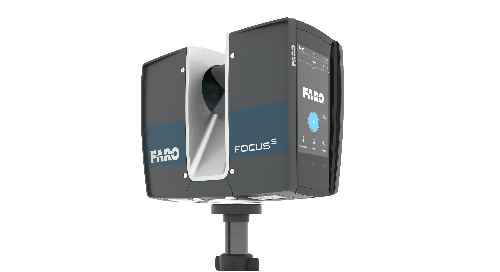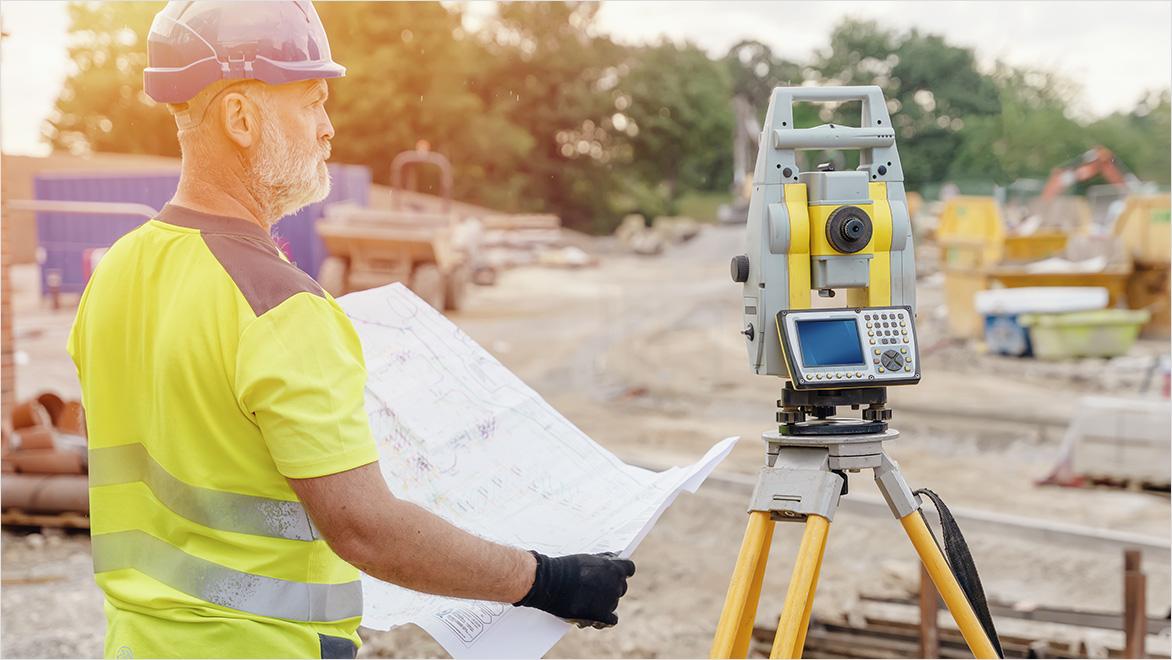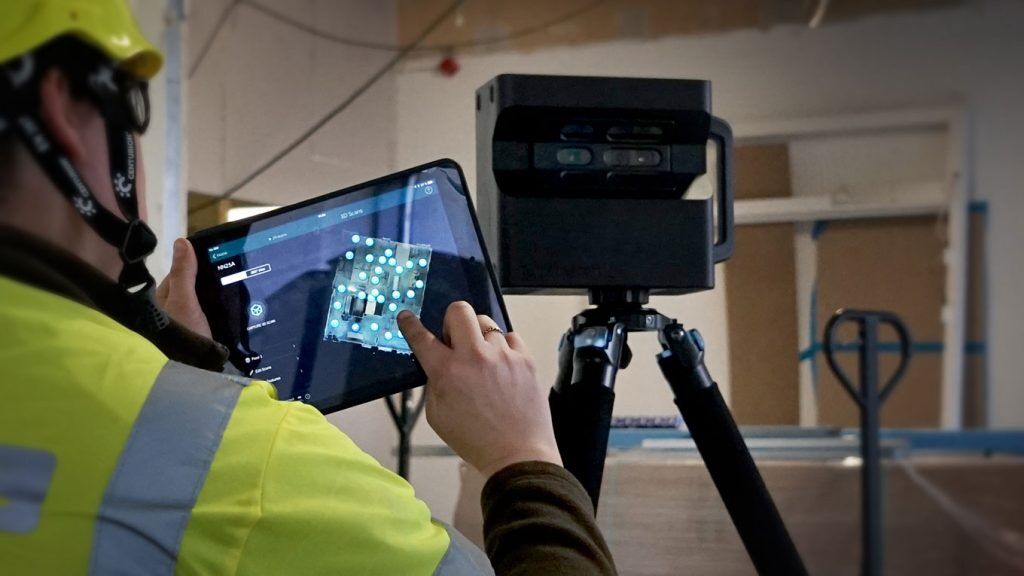How 3D Scanning Enables Creative Freedom
Wiki Article
Discovering the Applications of 3D Laser Scanning in Archaeology and Cultural Heritage Conservation
The assimilation of 3D laser scanning technology in archaeology and cultural heritage preservation notes a considerable innovation in exactly how archaeological sites and artefacts are recorded and evaluated. This non-invasive approach supplies precise spatial data, revealing complex details that were formerly tough to catch. As the applications of this modern technology proceed to evolve, various ramifications for education, preservation, and documents arise, welcoming additional exploration right into its transformative impact on the field.Understanding 3D Laser Scanning Modern Technology
3D laser scanning innovation has reinvented the field of archaeology by giving thorough and exact spatial data. This innovative modern technology employs laser beams to catch countless data points from an item or site, producing a very precise three-dimensional representation (3D Scanning). The resulting point clouds can disclose intricate information of historical sites, frameworks, and artifacts that may be unseen to the naked eyeUtilizing this modern technology, excavators can document the precise dimensions, forms, and placements of items with extraordinary precision. This approach reduces the danger of human mistake and removes the need for substantial hands-on dimensions. The information collected can be assessed and shared easily, facilitating collaboration among scientists. By incorporating 3D laser scanning with GIS and various other digital devices, excavators improve their capability to envision and translate historic contexts, leading to much deeper understandings right into old cultures and environments.
Enhancing Historical Paperwork
3D laser scanning substantially improves historical documentation with its capacity to develop precise website maps. This modern technology helps with detailed artefact evaluation, providing understandings that standard methods may neglect. In addition, it assures the conservation of contextual information, which is vital for understanding the partnerships within historical sites.Accurate Website Mapping
While typical mapping approaches often have a hard time with catching the intricate information of historical websites, progressed laser scanning technology supplies a cutting edge strategy to exact website mapping. This method allows excavators to produce very outlined and exact three-dimensional representations of websites, showcasing topographical variations and structural features with amazing fidelity. The ability to record millions of data points in an issue of mins enables detailed documentation, which can be conveniently upgraded and shared among scientists. Additionally, laser scanning promotes the measurement of intricate geometries that would be tough to analyze making use of standard devices. Consequently, this modern technology boosts the accuracy of website maps, adding significantly to the conservation and understanding of social heritage sources.In-depth Artefact Analysis
Laser scanning modern technology significantly boosts the evaluation of archaeological artefacts, supplying scientists with unprecedented information and precision. This approach records complex surface structures, measurements, and features that conventional documentation methods might overlook. By producing high-resolution 3D designs, scholars can closely analyze artifacts without the risk of damage fundamental in physical handling. This precision permits much better relative research studies, allowing specialists to determine production techniques, stylistic variants, and prospective social value. Additionally, the capability to adjust and picture information in 3 measurements facilitates a much deeper understanding of artefact capability and usage. On the whole, laser scanning fosters an extra comprehensive strategy to archaeological documentation, making sure that crucial information about artefacts is protected for future study and education and learning.Preservation of Contextual Information
Maintaining contextual information is vital for boosting historical documentation, as it ensures that findings are recognized within their original ecological and cultural structures. 3D laser scanning innovation considerably adds to this conservation initiative by recording detailed spatial connections among artifacts, frameworks, and their atmospheres. By creating accurate 3D versions, excavators can record the exact locations and alignments of items in situ, assisting in an extensive understanding of their context. This modern technology makes it possible for scientists to revisit and analyze sites long after excavation, preserving the stability of contextual info. Additionally, electronic records created with scanning can be shared globally, cultivating collective research study and public interaction. Inevitably, protecting contextual information through 3D laser scanning enriches historical narratives and advertises a much more profound recognition of cultural heritage.Conservation of Cultural Heritage Sites
As advancements in innovation remain to evolve, the preservation of social heritage sites has actually become increasingly dependent on ingenious methods such as 3D laser scanning. This innovation permits the thorough documentation of artifacts, landscapes, and frameworks, capturing their accurate dimensions and spatial relationships in a non-invasive fashion. By producing high-resolution 3D models, scientists can analyze and keep track of degeneration patterns, enabling positive preservation strategies.In addition, 3D laser scanning promotes the sharing of comprehensive website data with the global neighborhood, promoting cooperation among guardians, historians, and archaeologists. These models act as indispensable sources for education and learning and public engagement, raising recognition of cultural heritage concerns. Additionally, the electronic documents created can safeguard versus loss due to environmental elements, vandalism, or forget. Overall, 3D laser scanning represents a transformative approach to the preservation of cultural heritage, ensuring that these websites can be researched and valued by future generations.

Remediation and Reconstruction Initiatives
The comprehensive paperwork accomplished through 3D laser scanning plays a significant function in restoration and reconstruction efforts within archaeology. This technology offers exact measurements and high-resolution images, permitting exact electronic models of frameworks and artifacts. These versions act as necessary referrals during restoration procedures, enabling archaeologists to make and picture the initial layout educated choices concerning techniques image source and products needed for repair service.Furthermore, 3D laser scanning promotes the repair of damaged or lost components by producing thorough reproductions. This process help in making certain that reconstructions preserve historical honesty while also enabling for ingenious methods to recover sites. The capacity to examine wear patterns and structural weaknesses through checked information boosts understanding of a website's historical context and its usage gradually. 3D laser scanning not just preserves the physical aspects of cultural heritage but also improves the narrative of background, leading future restoration undertakings.
Educational and Research Opportunities
The combination of 3D laser scanning in archaeology opens considerable academic and research opportunities. Academic cooperations can enhance the understanding of old websites, while specialized training workshops outfit professionals with important skills for utilizing this modern technology. With each other, these campaigns promote a richer interaction with archaeological techniques and approaches.Academic Collaborations in Archaeology
Collective initiatives in archaeology have actually ended up being increasingly necessary for advancing both academic and research study possibilities. By cultivating partnerships amongst universities, research establishments, and additional reading cultural heritage companies, these partnerships promote the exchange of expertise and resources, improving the high quality of archaeological research studies. Joint jobs typically take advantage of varied experience, permitting innovative techniques and extensive evaluations, particularly in the application of technologies like 3D laser scanning. Such cooperations likewise advertise interdisciplinary approaches, involving fields such as preservation, background, and geography scientific research. On top of that, academic partnerships typically result in the development of new curricula and training programs, preparing the next generation of excavators to effectively utilize sophisticated modern technologies in their job. Ultimately, these alliances add to the preservation and understanding of cultural heritage.Training Workshops for Professionals
Educating workshops for experts in archaeology are increasingly crucial for improving skills in the application of sophisticated technologies such as 3D laser scanning. These workshops provide participants with hands-on experience in making use of innovative equipment and software application, cultivating a much deeper understanding of data capture and evaluation procedures. Professionals can learn to produce accurate electronic designs of historical sites, which significantly help in documents and conservation efforts. Furthermore, these training sessions typically include conversations on ideal practices and study, promoting expertise exchange amongst participants. By purchasing constant education and learning, professionals can stay updated on developing innovations, inevitably boosting the performance of their study and cultural heritage conservation efforts. This commitment to ability improvement is important for progressing the area of archaeology.Future Trends in 3D Laser Scanning for Archaeology
As developments in innovation remain to improve numerous areas, the future of 3D laser scanning in archaeology promises to improve both the precision and he said effectiveness of site paperwork and analysis. Arising patterns indicate a growing assimilation of expert system and artificial intelligence, promoting automated data processing and interpretation. This advancement will enable excavators to examine complicated datasets a lot more swiftly, resulting in faster insights into historical contexts.The assimilation of drone innovation with 3D laser scanning is most likely to expand, making it possible for detailed airborne surveys of archaeological sites that are tough to access. The increasing price of scanning devices will democratize gain access to, empowering smaller sized organizations and independent researchers to utilize these tools properly. Furthermore, improvements in digital reality and augmented fact will make it possible for immersive experiences for public involvement and education and learning, making historical findings a lot more accessible and interactive. These fads jointly signal a transformative future for archaeology, improving conservation initiatives and broadening the technique's outreach.
Often Asked Concerns
Just How Much Does 3D Laser Scanning Equipment Price?

What Are the Limitations of 3D Laser Scanning?
The limitations of 3D laser scanning consist of high prices, prospective information handling difficulties, level of sensitivity to ecological problems, and problem recording intricate information in intricate surface areas, which can influence the accuracy and completeness of checked representations. (3D Scanning)
Can 3D Laser Scanning Be Used Undersea?
Yes, 3D laser scanning can be made use of undersea, but it calls for specialized devices and strategies to conquer difficulties such as water distortion and restricted visibility. Effective applications have been shown in aquatic archaeology and underwater studies.Just how Lengthy Does a Scanning Task Typically Take?
A scanning project normally takes anywhere from a few days to numerous weeks, depending on the complexity and dimension of the area being scanned, in addition to the prep work and post-processing requirements included in the job.Are There Particular Software Requirements for Processing 3D Scans?
Yes, details software program demands for processing 3D scans consist of programs with the ability of managing huge factor clouds, such as Autodesk Wrap-up, Cyclone, or MeshLab. These tools help with analysis, visualization, and integration right into different applications effectively.The integration of 3D laser scanning technology in archaeology and cultural heritage preservation notes a considerable development in just how historic websites and artifacts are recorded and analyzed. 3D laser scanning technology has actually transformed the area of archaeology by offering in-depth and precise spatial data. As improvements in technology continue to progress, the preservation of cultural heritage websites has come to be progressively dependent on cutting-edge approaches such as 3D laser scanning. As developments in innovation proceed to reshape numerous areas, the future of 3D laser scanning in archaeology assures to improve both the precision and efficiency of website documentation and evaluation. The combination of drone innovation with 3D laser scanning is most likely to increase, enabling thorough aerial studies of historical sites that are hard to access.
Report this wiki page